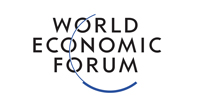
COVID-19 has brought the generation of energy from fossil fuels to breaking point. As the lockdown measures were introduced, global energy demand dropped precipitously at levels not seen in 70 years. The IEA has estimated that overall energy demand contracted by 6% and energy-related emissions will decrease by 8% for 2020. Oil demand is expected to drop 9% and coal 8% for this year, while crude oil is at record-low prices.
Previous energy crises provide insight into what happens when the oil price crashes and how the use of fossil fuels has subsequently rebounded. But this crisis is different, because it is demand-led. The scale of the fall in demand, the speed of change, and how widespread it has been have generated a radical shift that seems to be more than a temporary short-term drop in demand for fossil fuels, at least in the power sector.
With the fall in demand, renewable sources (mainly wind and solar) saw their share in electricity substantially increase at record levels in many countries. In less than 10 weeks, the USA increased its renewable energy consumption by nearly 40% and India by 45% (see graph). Italy, Germany, and Spain set new records for variable renewable energy integration to the grid.
This rise in renewable energy is not circumstantial
Although the pandemic is circumstantial and unexpected, the current outcome for the power sector is not. The ongoing increase in renewable energy into the grid results from a mixture of past policies, regulations, incentives and innovations embedded in the power sectors of many forward-thinking countries.
These are three key factors behind the increase in renewable energy during this crisis:
- Renewables have been supported by favourable policies. In many countries, renewables receive priority through market regulation. The priority for the first batch of energy to the network is given to the less expensive source, favouring cheaper and cleaner sources.
- Continuous innovation. Renewable energy has become the cheapest source of energy. IRENA recently reported that the cost of solar had fallen by 82% over the last 10 years, while BNEF states that renewable energy is now the cheapest energy source in two-thirds of the world.
- Preferred investment. Renewable energy has become investors’ preferred choice for new power plants. For nearly two decades, renewable energy capacity has grown steadily, and now 72% of all new power capacity is a renewable plant.





